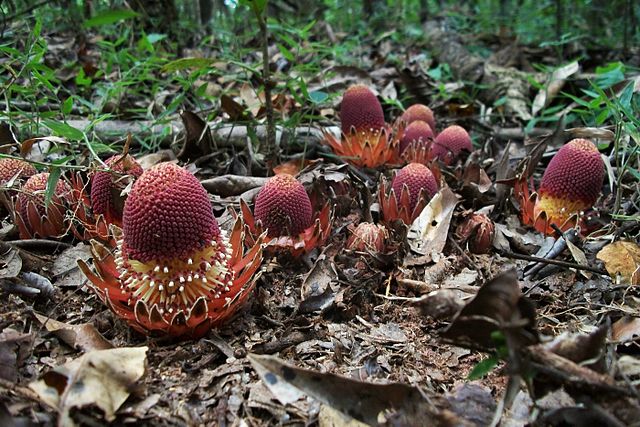A pair of researchers, one with Oxford University Botanic Garden, the other Universidade Federal de Sergipe, has conducted an overview of Langsdorffia, a parasitic flowering plant. In their paper published in Plants, People, Planet, Chris Thorogood and Jean Carlos Santos give an overview of the flower, its four species and explain why they believe more study of the plant is needed.
As the researchers note, Langsdorffia is a rare plant—indeed, only one of the researchers has actually seen the plant in the wild. It lives in Central and South America, Madagascar and Papua New Guinea. It is a simple plant, they note, having nothing more than a flower and tentacles that reach beneath the soil and attach to the roots of other plants—they have no leaves. Nutrients from the other plants (such as mimosas and figs) are pulled into the flower, which has a very unique look—the researchers describe it as resembling an undersea creature. The single flower is red, with a ribbed center and outreaching petals on the sides. It rather resembles a strawberry. Also, there are only four known species of the plant: L. hypogaea Mart, L. malagasica, L. papuana Geesink and L. heterotepala.

All four of the species are parasitic, and all four bloom during dry periods on a forested floor near the plant they are using for sustenance. They stand out because in most cases, everything around them is brown, such as dead leaves. The males are stalked, females are sessile, and both exude a fluid that smells sweet enough to attract other creatures, some of which are likely pollinators—it is still not known which ones. The fluid in males comes from their nubbin, while in females, it comes from their skirt. They are all few in number and live in very remote locations; thus, it is not known how many of any of the species are alive today.
The researchers suggest the biology of the plant is so unique that it challenges the notion of plants and what they are. They conclude by suggesting Langsdorffia is unlike any other plant in existence, and because so very little is known about it, more work is required.
Read the paper: Plants, People, Planet
Article source: Phys.org
Author: Bob Yirka
Image credit: Jean Carlos Santos






